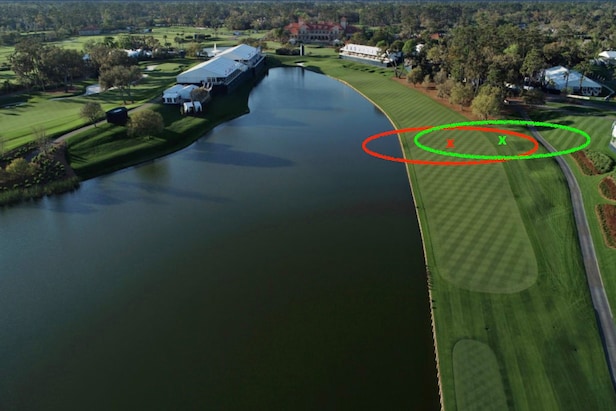What this fascinating consistency test revealed about single-digit handicaps
https://www.golfdigest.com/story/golf-study-driver-accuracy-feel-results

Outside of perhaps your putter, it's the driver that remains the most important and perplexing club in your bag.
Hitting your driver well — and by that we mean, far and relatively straight — is really important. I just wrote about a study which found that every 2.2 mph you gain in clubhead speed roughly correlates to 1.5 strokes off your scoring average. It’s perhaps the most important skill in golf.
Which is why this interesting tid-bit caught my eye as it floated across my radar a few weeks ago.
If you follow Lou Stagner, the Data Lead over at Arccos, on Twitter, you'll know he's a big manage-your-expectations guy. He wants you to know the stats so you understand what you're capable of right now, so you're not holding yourself to impossible standards that'll leave you continually disappointed.
One of the ways Lou did this recently was by conducting a little test.
He measured three different golfers — a three handicap, a five handicap, and a seven handicap, and had them hit a series of drivers over the course of five days, measured on a Foresight GC Quad system.
What did he find?
After discounting the occasional off-the-panet outlier drive, that these golfers had a side-to-size dispersion of 70 yards. Meaning that their shots routinely missed up to 35 yards on either side of their intended target.
I think this would catch most people by surprise. Shouldn't a single digit be hitting their driver more accurately? Well, they don’t. That’s the point.
And that matters for one important reason...
The central underlying point in Lou's fascinating findings is that golfers' misses off the tee are much bigger than they think, so they should aim accordingly.
Most golfers see the place they want to hit their ball, and then aim based on the shot they want to hit. Fine in theory, but in reality, it breaks down. You're only going to hit the shot you want to hit a handful of times.
Instead, you should be aiming not just so your good shots end up ok, but that you're average ones and bad ones do, too. Remember, you could miss your ball 35 yards right or left, so you'll need to account for it.
To understand what that looks like, here's a random example of TPC Sawgrass' terrifying 18th hole. When pros play this hole, they're singularly focused on not hitting their ball into the water, and we should be, too.
Aiming down the middle of the fairway, or even the right center of the fairway, would still leave a significant portion of your drives in the water. To account for a 35 yard buffer to the left of your target, you actually need to aim down the right rough. Again, that would probably catch most golfers by surprise.
Why would I aim into the rough? Doesn’t that mean that a perfect shot will end up in the rough?
Yes, probably.
But that's not the end of the world, because it also means the not-perfect shots that you hit to the left will probably find the fairway, rather than the water.
A pretty great outcome for a not-great shot.
As for your misses to the right? If nothing else, they'll end up on dry land. Pros miss out to the right on this hole all the time, and that's why. Because they're not aiming down the middle in the first place.
Be realistic with your expectations, understand how big your misses actually are, and aim accordingly. Do that, and you'll end up playing better golf — without hitting better shots.

